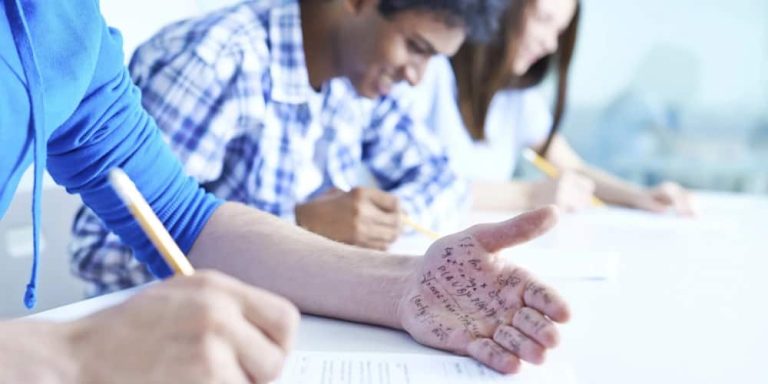2025 50 Likely Physics Questions And Answers For the JAMB
1. A body at rest has:
A. Kinetic energy
B. Momentum
C. Potential energy
D. None of the above
Answer: C. Potential energy
2025 50 Likely Physics Questions And Answers For the JAMB
2. If a force of 20 N moves a body by 5 meters, what is the work done?
A. 25 J
B. 100 J
C. 10 J
D. 5 J
Answer: B. 100 J
3. The unit of power is:
A. Watt
B. Joule
C. Newton
D. Pascal
Answer: A. Watt
4. What is the acceleration due to gravity on Earth?
A. 9.8 m/s²
B. 6.67 x 10^-11 N(m²/kg²)
C. 3.6 m/s²
D. 5 m/s²
Answer: A. 9.8 m/s²
5. What is the formula for calculating momentum?
A. Mass x Acceleration
B. Force x Time
C. Mass x Velocity
D. Force x Distance
Answer: C. Mass x Velocity
6. A machine lifts a load of 500 N through a distance of 10 m in 5 seconds. Calculate the power developed.
A. 100 W
B. 1000 W
C. 200 W
D. 500 W
Answer: B. 1000 W
7. The energy possessed by a body due to its motion is called:
A. Kinetic energy
B. Potential energy
C. Thermal energy
D. Electrical energy
Answer: A. Kinetic energy
8. What is the speed of light in a vacuum?
A. 2.5 x 10^8 m/s
B. 3.0 x 10^8 m/s
C. 3.5 x 10^8 m/s
D. 4.0 x 10^8 m/s
Answer: B. 3.0 x 10^8 m/s
9. If a current of 4 A flows through a resistor of 3 Ω, what is the voltage across the resistor?
A. 12 V
B. 7 V
C. 10 V
D. 15 V
Answer: A. 12 V
10. What is the main cause of the greenhouse effect?
A. CO2 absorption of infrared radiation
B. Depletion of ozone layer
C. Sunlight reflection
D. Water vapor in the atmosphere
Answer: A. CO2 absorption of infrared radiation
11. A 50 Ω resistor has a potential difference of 100 V across it. What is the current flowing through it?
A. 0.5 A
B. 2 A
C. 0.25 A
D. 1 A
Answer: B. 2 A
12. What type of wave is sound?
A. Transverse wave
B. Electromagnetic wave
C. Longitudinal wave
D. Standing wave
Answer: C. Longitudinal wave
13. A car of mass 1200 kg is moving with a velocity of 25 m/s. What is its kinetic energy?
A. 375 kJ
B. 3750 J
C. 1500 J
D. 450 kJ
Answer: A. 375 kJ
14. What is the phenomenon where light bends as it passes from one medium to another?
A. Reflection
B. Refraction
C. Diffraction
D. Dispersion
Answer: B. Refraction
15. The unit of electric charge is:
A. Ampere
B. Coulomb
C. Volt
D. Ohm
Answer: B. Coulomb
16. Which law states that “current is directly proportional to voltage”?
A. Ohm’s law
B. Newton’s first law
C. Kirchhoff’s law
D. Ampere’s law
Answer: A. Ohm’s law
17. The force experienced by a charge moving in a magnetic field is known as:
A. Gravitational force
B. Magnetic force
C. Lorentz force
D. Electrostatic force
Answer: C. Lorentz force
18. The SI unit of frequency is:
A. Hertz
B. Joule
C. Tesla
D. Decibel
Answer: A. Hertz
19. What is the capacitance of a capacitor if it stores a charge of 0.02 C at a potential difference of 5 V?
A. 0.004 F
B. 0.1 F
C. 0.2 F
D. 1 F
Answer: A. 0.004 F
20. The pressure in a fluid is given by:
A. Density x Volume x Height
B. Force/Area
C. Area x Height
D. Mass/Volume
Answer: B. Force/Area
21. The image formed by a plane mirror is:
A. Real and inverted
B. Virtual and upright
C. Real and upright
D. Virtual and inverted
Answer: B. Virtual and upright
22. A transformer has 500 turns in its primary coil and 1000 turns in its secondary coil. What type of transformer is this?
A. Step-up transformer
B. Step-down transformer
C. Power transformer
D. Isolating transformer
Answer: A. Step-up transformer
23. The ratio of charge to mass for an electron is:
A. e/m
B. q/v
C. m/e
D. F/q
Answer: A. e/m
24. The unit of pressure is:
A. Pascal
B. Joule
C. Watt
D. Ohm
Answer: A. Pascal
25. What is the formula for calculating potential energy?
A. mgh
B. 1/2 mv²
C. F/A
D. V = IR
Answer: A. mgh
26. What property of sound determines its pitch?
A. Amplitude
B. Frequency
C. Speed
D. Wavelength
Answer: B. Frequency
27. An object floats in water because:
A. Its weight is equal to the weight of the displaced water
B. Its weight is greater than the buoyant force
C. Its density is greater than water
D. Its volume is smaller than the displaced water
Answer: A. Its weight is equal to the weight of the displaced water
28. The focal length of a converging lens is:
A. Positive
B. Negative
C. Zero
D. Infinite
Answer: A. Positive
29. What is the electrical property that opposes current flow in a circuit?
A. Voltage
B. Resistance
C. Capacitance
D. Inductance
Answer: B. Resistance
30. Which principle states that the total energy of an isolated system remains constant?
A. Conservation of momentum
B. Conservation of energy
C. Newton’s second law
D. Hooke’s law
Answer: B. Conservation of energy
31. A concave mirror forms a real and inverted image when the object is:
A. At infinity
B. Beyond the center of curvature
C. At the principal focus
D. Between the focus and mirror
Answer: B. Beyond the center of curvature
32. The speed of sound in air increases with:
A. Increase in pressure
B. Increase in temperature
C. Increase in humidity
D. Both B and C
Answer: D. Both B and C
33. What device is used to measure electric current?
A. Voltmeter
B. Ammeter
C. Ohmmeter
D. Galvanometer
Answer: B. Ammeter
34. If two resistors are connected in parallel, their combined resistance will be:
A. Greater than either resistor
B. Equal to the sum of the resistances
C. Less than the smallest resistor
D. Equal to the largest resistor
Answer: C. Less than the smallest resistor
35. Which law of thermodynamics states that energy cannot be created or destroyed?
A. Zeroth law
B. First law
C. Second law
D. Third law
Answer: B. First law
36. What is the main principle behind the operation of a generator?
A. Electromagnetic induction
B. Conservation of momentum
C. Refraction of light
D. Photoelectric effect
Answer: A. Electromagnetic induction
37. What is the SI unit of force?
A. Joule
B. Newton
C. Watt
D. Pascal
Answer: B. Newton
38. A body moving in a circular path with constant speed has:
A. Uniform acceleration
B. Varying speed
C. Uniform velocity
D. Centripetal acceleration
Answer: D. Centripetal acceleration
39. The time taken for a complete oscillation is called:
A. Frequency
B. Period
C. Amplitude
D. Wavelength
Answer: B. Period
40. A transformer works on the principle of:
A. Electromagnetic induction
B. Electric field
C. Electrostatics
D. Thermodynamics
Answer: A. Electromagnetic induction
41. In an electric circuit, the direction of current is from:
A. Negative to positive terminal
B. Positive to negative terminal
C. South to north pole
D. None of the above
Answer: B. Positive to negative terminal
42. When a charged body is brought close to a neutral object, the neutral object becomes:
A. Positively charged
B. Negatively charged
C. Polarized
D. Electrically neutral
Answer: C. Polarized
43. A material that does not allow heat to pass through easily is called:
A. Conductor
B. Insulator
C. Semiconductor
D. Resistor
Answer: B. Insulator
44. A force that opposes the relative motion of two surfaces in contact is:
A. Gravitational force
B. Frictional force
C. Tension
D. Magnetic force
Answer: B. Frictional force
45. Which quantity remains constant in an inelastic collision?
A. Kinetic energy
B. Momentum
C. Potential energy
D. Force
Answer: B. Momentum
46. Which particle in an atom has no charge?
A. Proton
B. Neutron
C. Electron
D. Positron
Answer: B. Neutron
47. The process by which atoms lose or gain electrons to become charged is called:
A. Fusion
B. Ionization
C. Fission
D. Emission
Answer: B. Ionization
48. What type of mirror is used as a rearview mirror in vehicles?
A. Concave mirror
B. Convex mirror
C. Plane mirror
D. Parabolic mirror
Answer: B. Convex mirror
49. If the frequency of a wave is doubled, what happens to its wavelength (if speed is constant)?
A. Doubled
B. Halved
C. Quadrupled
D. Remains the same
Answer: B. Halved
50. What is the effect of increasing the length of a simple pendulum on its period?
A. Increases
B. Decreases
C. Remains the same
D. Oscillates randomly
Answer: A. Increases






